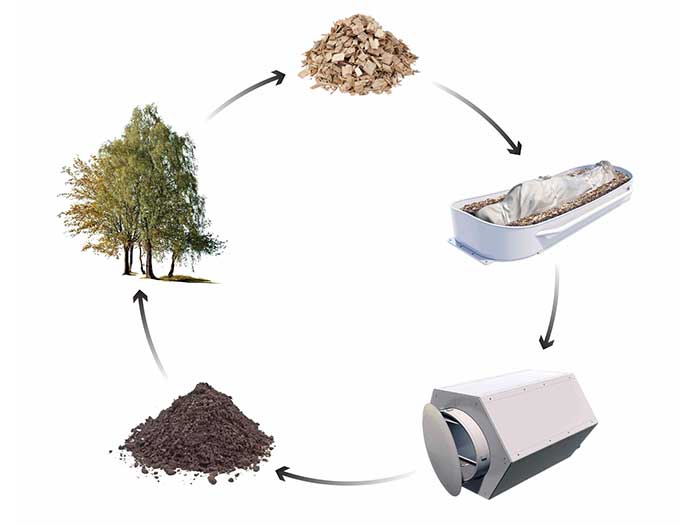Traditional after-death care options such as burials and cremations are not only expensive but also have a huge environmental impact. Recompose, a new facility in Seattle, USA, offers a third alternative that not only saves energy but also reduces carbon emissions.
Designed by Seattle-based architectural practice Olson Kundig in collaboration with Katrina Spade, founder and CEO of Recompose, the facility located in Seattle’s SODO neighbourhood is the first in the world to offer a human composting service that requires one-eighth the energy used in a conventional cremation, and prevents one metric ton of carbon-dioxide from entering the atmosphere per person.
Based on a process called ‘natural organic reduction’, Recompose transforms human remains into soil that can be used to regenerate the earth, and nurture and nourish new life.
“If you could return your body to the earth in a way that benefited the environment, would you do it?” This was the question that set Spade off on a journey to explore new green death care options that would eliminate the substantial environmental repercussions of burials and cremations. Having recently entered the Master of Architecture program at UMass Amherst in the fall of 2011, she was encouraged by the department’s faculty to take her study further.
"The architecture program at UMass Amherst is the reason Recompose exists," Spade said. "My professors were kind and curious, allowing new ideas to flow freely. They encouraged creative, critical thinking and expected students to dive deep. So, I decided to dive deep into my own mortality and ask what I'd want for my body when I died."
In 2017, Spade founded Recompose as a public benefit corporation, and then worked to get the human composting process legalised in the Washington State. The 18,500sqft Recompose facility in Seattle is a licensed green funeral home featuring a reception area; the Gathering Space – an intimate space where family and friends can come together to honour and celebrate their loved one; Cedar – a private room for those who wish to perform hands-on care; and the Greenhouse, which houses 54 hexagonal steel vessels that convert bodies into nutrient-rich soil.
The laying-in ceremony is similar to a traditional funeral service, and represents a moment of transition. The body is placed on a dark green bed, called a cradle, and draped in a natural cloth shroud with flowers and plant material placed on it. After the ceremony, the cradle is moved into the threshold vessel, which leads into the vessel system – the Greenhouse – to begin the composting process.
The body will be covered with wood chips, alfalfa and straw in the vessel where microbes from the plant materials will naturally break the remains down till the molecular level, resulting in the formation of nutrient-rich soil. The entire process, which is closely monitored, takes about 8-12 weeks, and each body can create about 0.75m³ of soil. The family can either take the soil back to their own gardens or donate it to the Bells Mountain, a 700-acre non-profit land trust in southern Washington where it will support the ecological restoration and revitalisation of wetlands, riparian habitats, native plants, and vulnerable wildlife species.

The Recompose Cycle (Image: UMass Amherst/ Recompose)
"I’ve been fascinated with Katrina Spade’s alternative burial concept since she shared it with me years ago, and Olson Kundig is honoured to work closely with her team on the design of the first Recompose facility in the world,” Olson Kundig design principal Alan Maskin said.
"It's not for everyone, but having more choices for our bodies after we die is a good thing, especially when we look at the state of the world and climate change. I think Recompose brings a sense of hope to people," Spade added.
Images: Austin Wilson

